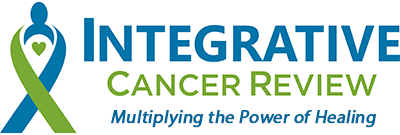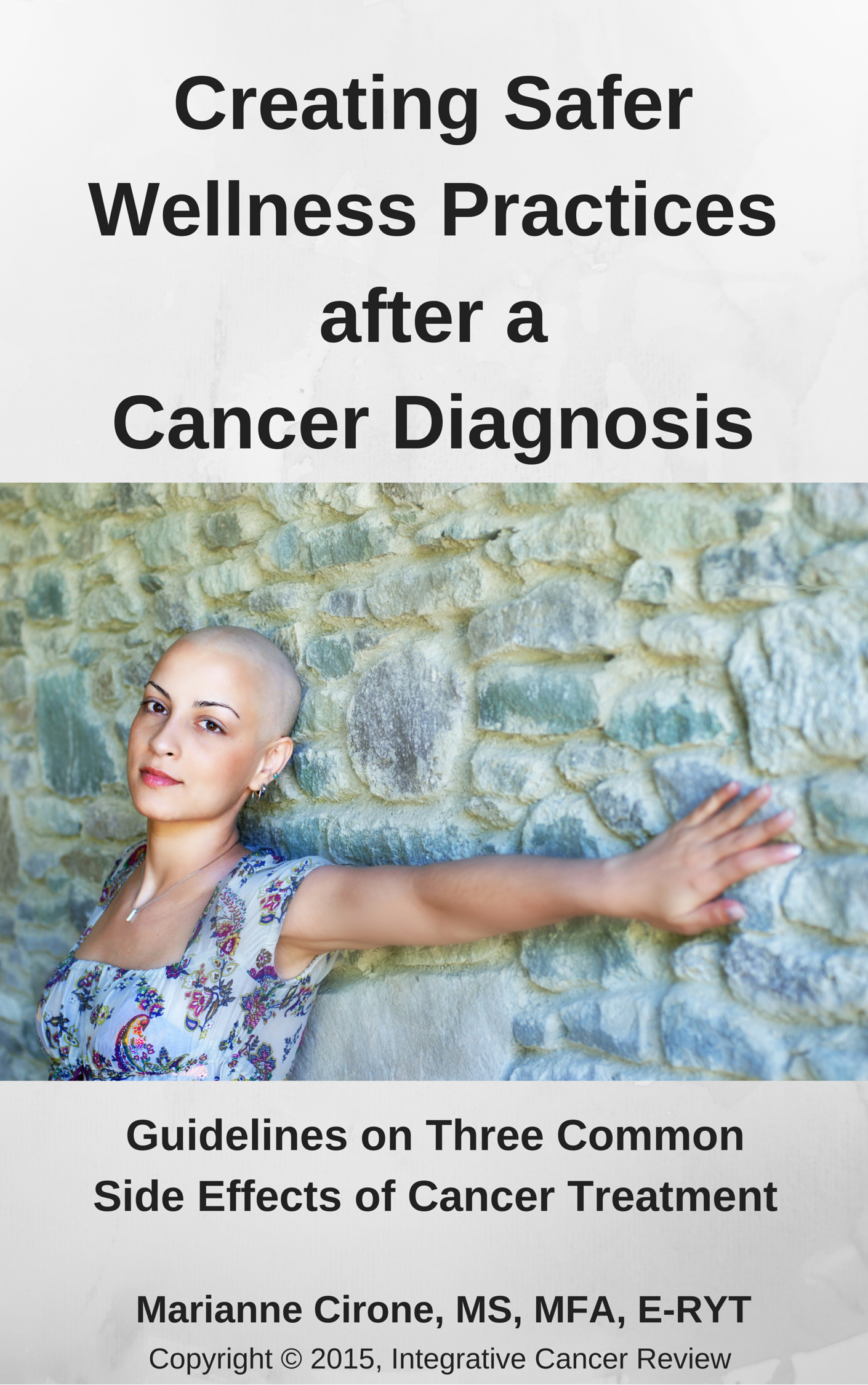
by Geralyn O’Brien, Licensed Esthetician and Oncology-Focused Skin Care Professional
As a cancer survivor since 1998, I became an esthetician because I felt there was a lack of information being given to cancer patients addressing their skin needs. After my first cancer, I spent many years as a Reach to Recovery volunteer with the American Cancer Society. I called and supported women who had breast cancer and I repeatedly found that so many women had questions about safe, effective skin care and make-up products. These women also had many questions regarding the side effects they were experiencing from anti-estrogen medications for estrogen positive cancers. Anti-estrogen medications can be taken for many years after treatment ends and sometimes lifelong. Surgeries, chemotherapy and other medications associated with cancer treatments can bring on menopause many years before natural menopause.
At the same time, after my treatment ended, I started having rashes and irritation in the area that had been irradiated. My breast surgeon’s office manager–yes, the office manager–told me to eliminate any skin products and detergents with synthetic fragrance. I later learned that fragrance or parfum listed on a label can potentially contain thousands of different ingredients—of which over 800 are known toxins, as well as being one of the top allergens and causes of dermatitis and irritation. Women’s Voices for the Earth stated that in October of 2017, without explanation, the International Fragrance Association (IFRA) added approximately 750 ingredients to the list of chemicals that go into making up perfumes and scented product –including toxic phthalates DBP & DEHP, & carcinogen, styrene oxide.
To this day, the area of my skin that was irradiated almost 20 years ago is still very fragile and sensitive. In 2013, after my second diagnosis of breast cancer, a port was placed on the side that had been irradiated. The skin was so fragile, and the pain never went away the whole time the port was implanted. After my rounds of chemo ended, I needed a double mastectomy and again, the side that was irritated many years before was slower in healing—along with the drains on that side not working properly.
Luckily, during my irradiation treatment in 1998, my Radiation Oncologist would evaluate my skin each week and change the products I was using if my skin was breaking down too much. In 2011, even though it was many years after my irradiation, I talked to my Radiation Oncologist’s nurse about what they were using on patients. It was not just one product, but different products depending on whether reactions, were mild, moderate or severe, which is how all patients should be treated and evaluated each week. Today, unfortunately, more and more patients are being told to use aloe gel during Radiation and Proton treatments, and are then left to deal with the often severe side effects that arise from the added chemicals in most aloe gels on the market (depending on the way the aloe is processed, the extract may contain aloins, chemicals known to have adverse side effects and therefore aloe has been added to California’s Proposition 65).
Today, in my work as an oncology-focused esthetician, I find that skin reactions to ingredients in products are a major source of discomfort for cancer patients. Research shows that some ingredients and chemicals can be carcinogenic, hormone and endocrine disrupters or skin and respiratory irritants. We see new findings every day that suggest skin ingredients and foods we need to avoid. In addition, due to the side effects of cancer treatments, cancer patients often experience treatment-related skin conditions, and at the very least, find that their skin becomes more sensitive.
Intentions are well-meaning, but sadly, most products distributed to cancer patients are full of irritants, and not individualized to address each individual’s skin conditions. In this case, one size doesn’t fit all. Many physicians have certain guidelines they follow and may not be open to new technologies or advancements. Early intervention is key to help minimize side effects. Pink ribbons running across a product does not mean it is safe, but time after time, cancer patients think this means safe for them to use. As an esthetician, I do not treat or diagnosis skin conditions, but I know estheticians can be a great asset to cancer patients when working together with physicians and nurses.
So how does one begin to determine what to use during chemo and radiation with so many products to choose from? My first step is having a cancer patient bring in the products they are currently using. I use a full intake form regarding where they are in treatment, any known allergies to products, food or ingredients they are aware of, along with any other medical conditions they may already have. In addition to the full intake form, there is another form I use for facials and skin care to address changes in hair, skin and nails that they may be experiencing.
In most cases, I recommend an oncology-modified facial during treatment to help nourish skin with calming, soothing and hydrating ingredients. I also try to simplify and minimize what they are using, making sure the products they are using are free of harsh chemicals, allergens and known sensitizers. A couple product lines I recommend were developed for health-challenged skin and specifically address oncology concerns. Also important to me is a full ingredient list available for each product. My mentorship with others in the industry and ongoing education for not only myself but also educating my clients to read labels and make healthy, informed choices.
If my client is undergoing radiation treatments, I will suggest specific products to use at this time when the skin is so vulnerable. However, I do recommend that my clients bring this list of suggested products to their physicians, so they can get the physician’s approval before they begin to use them. Most physicians follow a certain protocol for products they recommend–some of which unfortunately are not evidenced-based or up-to-date—and it can be a little harder changing from their recommended products. I have encountered some great results with skin during irradiation and healing after treatment ends when physicians are open to my suggestions. And of course, beginning a good skin care regimen for the face and body can help lesson and minimize many skin side effects. Our goal is to maintain healthy skin throughout treatment with safe, effective skin-care and make-up products.
Some of the most common skin changes patients may experience going through cancer treatments can include dry, itchy, sensitive skin to harder to manage changes like red, irritated rashes and chemo-induced acne. Radiation treatment can include burns and moist desquamation. Once side effects appear it becomes harder to manage skin reactions successfully when our barrier is broken down.
A survey done by CancerCare in 2008 showed that skin-related side effects are a concern for most cancer patients, and stated patients are unprepared for the side effects they experienced.
In a press release by CancerCare, Mario Lacouture, MD, a dermatologist who specializes in cancer treatment related skin problems at Sloan Kettering Hospital, stated: “Sustaining quality of life is a paramount importance to an individual who is undergoing treatment for cancer, and proactively managing side effects of the skin, hair, and nails is critical for doing it successfully.”
Dr. Lacouture, who founded the SERIES Clinic at Northwestern University’s Feinberg School of Medicine in Chicago, also served as one of the authors of a skin care study which was done at Northwestern. This study, published in Supportive Care in Cancer in 2010, titled Skin care management in cancer patients: an evaluation of quality of life and tolerability, states that: “specifically tailored skin care management for cancer patients is well tolerated by patients currently undergoing cancer therapy or radiation, and a majority of subjects report that such therapies are better than previous regimens used.”
By helping to bridge the gap between the medical community and patients, estheticians can have a profound effect on helping to keep cancer patients skin healthy and well balanced during and after treatment. By addressing each client individually and recommending products to promote healing and free of irritants. One company I found helping to bridge that gap is NeoGenesis, a skin line based on stem cell science. NeoGenesis’s products use a patented S2RM core technology and contain multiple adult stem cell-released molecules.
In the patients that I have experienced using NeoGenesis products, I am seeing great results in healing the skin and helping to reduce pain, inflammation, and downtime. Recovery, NeoGenesis’s most advanced product, is a powerful serum that acts as a proven boost to naturally return the skin to a healthy state. Numerous case studies show this to be true for conditions from aged skin to inflamed, damaged burned skin. Recovery speeds the healing process and reduces post treatment inflammation and irritation.
Case Study: I was contacted by a women I will call Donna, who had just finished up proton therapy for breast cancer. After six weeks of proton therapy, Donna’s skin was extremely broken down. Radiation dermatitis (RD) is thought to be caused by an imbalance of pro-inflammatory and pro-fibrotic cytokines, which starts after irradiation and lasts for months or even years. Clinically visible as a change of skin to a red and dry appearance. RD includes skin hypo- and hyper-pigmentation, skin atrophy, hyperkeratosis, loss of skin appendages, hair follicles, sebaceous, and sudoriferous (sweat glands). A common defect after irradiation is telangiectasia, a dilation of small blood vessels. Ionizing radiation causes damage to the blood vessels which may lead to insufficient oxygenation of the skin cells, predisposing one to ulceration and /or chronic wounds. Further, this effect may be exacerbated by skin atrophy of hyperkeratosis. Skin that is weakened and dehydrated is prone to injuries, and the addition of hypoxia can cause severe, non-healing wounds or even skin necrosis.
The only product that Donna was instructed to use during Proton therapy was aloe gel, with no other directions on brands or ingredients. Donna’s aloe gel she was using was full of irritants, dyes and alcohol. Since Donna was finished with treatment, I believed she was a perfect candidate for the NeoGenesis product, Recovery. We also added in the NeoGenesis Moisturizing Mist and Intensive Moisturizer. Donna experienced immediate relief since the start of using the NeoGenesis products. Donna sent in pictures each week to monitor her healing and continues to improve the condition of her skin every day.
Below, we have Q and A with the founder of NeoGenesis™, Dr. Gregory Maguire, with a look at what goes into the development of a potentially game-changing skin care product for oncology patients.
Before founding NeoGenesis™, Dr. Maguire was professor of neuroscience and ophthalmology at the University of Texas and the University of California, San Diego. He was awarded the prestigious Fulbright-Fogarty Fellowship from the National Institutes of Health, has over 100 publications, and is currently under contract to finish his book, “Adult Stem Cell Released Molecules: A Paradigm Shift to Systems Therapeutics.”
Dr. Maguire is the inventor of the patented S2RM® technology that is used in most of the NeoGenesis™ products, which have won the 2017 Innovative Ingredient Advancement Award by the Esthetician Connection; they were one of six winners from thousands of product lines tested. Some of Dr. Maguire’s publications can be found on PubMed (search: Maguire Greg), on the web, or through the NeoGenesis website. He has written a book titled, Adult Stem Cell Released Molecules: A Paradigm Shift to Systems Therapeutics, which will be published by Nova Science Publishers in 2018.
How did you/your company get involved in working with the cancer community?
Originally, we developed the technology at NeoGenesis™ for wound care and neurodegenerative diseases. As our technology and products for wound care were developing, we encountered many cancer patients with radiation dermatitis, a condition of inflamed, weakened skin that follows treatment with ionizing radiation. Having discovered that our products were very efficacious in treating both acute and chronic radiation dermatitis, NeoGenesis™ began working closely with many cancer patients. Many of our team members at NeoGenesis™ personally witnessed the extreme physical and psychological trauma that many cancer patients experience. As a result, we wanted to do our part to serve these patients and thus became associated with a number of individuals and non-profit organizations who serve the cancer community. The NeoGenesis™ team considers it our duty and honor to work with the cancer community.
What are the benefits of your products – in general and specifically for people affected by cancer?
Currently, NeoGenesis™ offers a number of products that are topically applied to the skin in order to mitigate the pain and inflammation associated with exposure to ionizing radiation, whether the problem is acute and/or chronic. Equally important, our technology, which incorporates the molecules released from various adult stem cell types that are resident in the skin, is also helpful in rebuilding the skin, including the extracellular matrix. Even chronic radiation dermatitis patients–who have dealt with the condition for years–have achieved great benefit from starting the NeoGenesis regimen years after the onset of their condition.
The technology at NeoGenesis™ is really about homeostatic renormalization of the skin. What does this mean? Damaged and aged skin loses its natural balance of molecules, including the loss of proteostasis, which is a loss of the content and quality of proteins in the skin. The S2RM® technology of NeoGenesis simply returns to the skin what was present when we were young and healthy. For example, NeoGenesis’ S2RM® technology restores aged and/or damaged skin back to the normal number and quality of proteins, hence the term “homeostatic renormalization.”
Are there any research studies that you are aware of supporting the use of this technology?
There are numerous peer-reviewed publications supporting the role of stem cell released molecules in quelling inflammation and pain, and rebuilding the layers of the skin. Furthermore, a number of products have been approved by the FDA for wound healing that use the molecules from stem cells as their mechanism of action. While some approved products will use, for example, one growth factor such as PDGF, more advanced technologies, such as S2RM® from NeoGenesis, use a combination of factors from the stem cells, which will prove to be much more efficacious than just one or a few factors.
For more information on the science behind the NeoGenesis™ technology, see Product Science for Professionals and Consumer Product Science.
We have many case studies supporting the safety and efficacy of our products in mitigating the sequela associated with radiation dermatitis, as well as others who are experiencing various forms of wounded or damaged skin.
Visit the NeoGenesis™ website to read more about the products, the healing process of skin and the science behind each product. Links to White Papers, Bibliography and Resources, and Videos.
Click here for a copy of the NeoGenesis brochure showing the effects of serious skin conditions.
About Geralyn O’Brien
Geralyn O’Brien is a licensed esthetician who specializes in oncology-focused skincare. As a two-time breast cancer survivor, Geralyn saw firsthand the effects that cancer, chemotherapy and other medical treatments had on the skin, including the appearance of aging. Spending many years supporting other breast cancer patients as a Reach to Recovery volunteer with American Cancer Society, she found that cancer patients lacked knowledge about the impact of cancer treatment and how to safely address concerns. Hoping to fill this gap, she completed her Esthetician training with Dr. Natalie Doran at International Skin Beauty Academy in Schaumburg, Illinois. In addition, Geralyn took several oncology-focused esthetics training programs to expand her knowledge base.
In 2011, Geralyn started the oncology skincare program at LivingWell Cancer Resource Center in Geneva, Illinois, serving as Lead Esthetician, creating protocols for the entire esthetics team. In 2016, Geralyn launched the skincare program at Waterford Place Cancer Resource Center in Aurora, Illinois. In 2018, it was there that she helped to design and implement a pilot program called “Simply Beautiful” which educates women on safe skincare, makeup and hair loss while enhancing each woman’s natural beauty.
Along with providing oncology facials and skincare consultations at Waterford Place, Geralyn helps organize spa days and teaches fun interactive classes for cancer patients. She is also an Ambassador with Oncology Spa Solutions where she helps to bring oncology awareness to local esthetic schools and estheticians in Illinois and serves as a contributor to the Integrative Cancer Review online journal.
Geralyn is passionate about helping others cope with the physical, emotional and financial effects of cancer. It is her philosophy that ongoing education and mentorship will continue to bring much needed awareness to important aspects of cancer care that too many people go without. Geralyn works to empower those impacted by cancer and continues to advocate on their behalf. She says healing is a journey and she constantly sees the benefits that wellness programs provide to cancer patients and their families.










